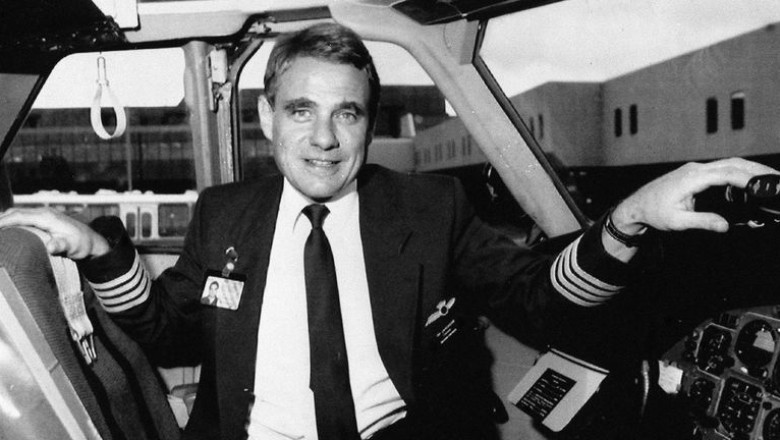
Cockpit window shatters during flight, then pilot gets sucked out of the airplane
Heading to Spain
On June 10, 1990, passengers boarded a flight to Malaga, Spain, expecting a pleasant journey with good weather. Captain Timothy Lancaster and his co-pilot Alastair Atchison were responsible for a safe and smooth flight. Both were experienced and trusted professionals, providing reassurance to the passengers.

The travelers had no reason to expect anything out of the ordinary; it was just another day with a routine flight. The sky was clear, and the mood among the passengers was relaxed as they looked forward to their sunny destination. In the cockpit, both Lancaster and Atchison prepared for the flight by following standard protocols and checklists to ensure everything was in order for the upcoming journey.
Takeoff
Co-pilot Atchison, with over 1,000 flight hours on the BAC One-Eleven, was in charge of the takeoff. He took his seat in the pilot's chair and carried out the final checks with precision and focus.
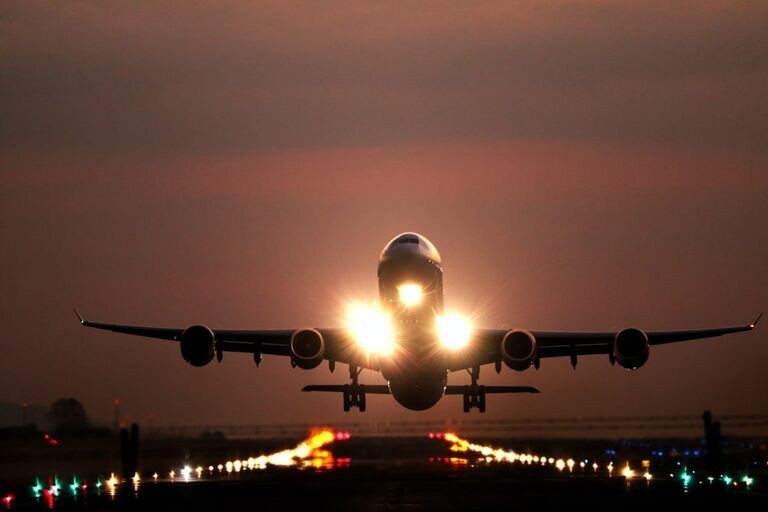
As the engines roared and the aircraft began its ascent, Atchison smoothly guided the plane higher above the ground. The passengers, unaware of the complexity of the process, felt the familiar sensation of climbing and trusted the cockpit crew's skills to safely guide them through the skies.
Business as usual
In the cabin, flight attendants were busy attending to the passengers' needs. They distributed pillows and took meal orders to ensure everyone was comfortable for the flight.

Meanwhile, Captain Lancaster took over from Atchison in the cockpit, a routine exchange in the flight process. As they entered the cruise phase, both pilots relaxed slightly, loosening their shoulder harnesses and feeling confident about the smooth progress of the journey so far.
In the clouds
Two significant events occurred shortly after the pilots loosened their shoulder harnesses. First, the aircraft reached a cruising altitude of 17,300 feet, a standard height for a flight of this kind.

Captain Lancaster, satisfied with the successful ascent and secure in the routine of the flight, also decided to loosen his lap belt. This small gesture of relaxation was common among pilots during the less demanding phases of a flight.
Bang!
Suddenly, without warning, a loud and startling noise disrupted the calm in the cockpit. For the 81 passengers on board, it seemed like an explosion had occurred.

The abrupt and intense sound indicated that something catastrophic had happened, and the cause of this chaos would soon become alarmingly clear in the cockpit.
Split-second
In a split second, Captain Lancaster found himself in a life-threatening situation. He struggled to open his eyes against the icy cold and strong wind that now surrounded him.

The realization hit him with shocking clarity – he was no longer safely inside the cockpit. A window had exploded, and he was now partially outside the aircraft, exposed to the extreme elements and dangerous altitude.
Forced out
In this critical moment, flight attendant Nigel Ogden entered the cockpit and was met with a scene of unimaginable chaos. He saw Captain Lancaster's body being sucked out of the broken window.

Acting instinctively, Ogden lunged forward, grabbing Lancaster's ankles in a desperate attempt to prevent him from being completely pulled out of the aircraft. The cabin quickly filled with heavy condensation, obscuring visibility and adding to the already intense and panic-filled atmosphere.
Controls blocked
The situation in the cockpit was desperate. Lancaster's body was trapped in a dangerous position, his knees wedged between the flight controls, making it impossible for him to free himself. Ogden desperately clung to Lancaster, using all his strength to hold onto him.

Meanwhile, the cockpit door had been pushed inward by the massive pressure change and now lay across the control console, further exacerbating the already critical situation.
Atchison takes over
With Captain Lancaster incapacitated and Ogden fighting for him, the responsibility for a safe landing of the aircraft fell entirely on Co-pilot Atchison. He faced an unimaginable challenge of flying the aircraft with a severely damaged cockpit and a partially incapacitated captain, as the control panel was blocked by the shifted door.

The situation could not have been more dramatic, and Atchison knew that the lives of everyone on board depended on his ability to handle this unprecedented emergency.
In Disaster Mode
Amidst the chaos, Atchison struggled to maintain focus. The deafening rush of wind in the cockpit drowned out the voices of air traffic control and their crucial instructions. Despite his extensive experience and training, nothing could have fully prepared him for such an extreme scenario.

The situation was a pilot's worst nightmare brought into reality – a disaster scenario testing his skills and composure. Atchison now faced the monumental task of safely returning the aircraft and its passengers to the ground, a challenge requiring all his expertise and resilience.
Pure Chaos
The situation on board rapidly deteriorated. With the autopilot system failing due to the massive force of the explosion, the aircraft entered a dangerous and uncontrolled descent. The heavy metal door that had come loose and was now on the throttle inadvertently caused the aircraft to gain speed during the descent.

The pilots' worst fears were unfolding in real-time. A catastrophic descent, combined with rapidly increasing speed, threatened the safety of everyone on board. Co-pilot Atchison, facing a severe emergency, had to think quickly and act to avert a tragedy. His mind raced through the training and experience he had accumulated over the years, yet nothing had truly prepared him for the chaos now gripping the cockpit.
Making a Plan
Chaos reigned in the cockpit as flight attendants tried to secure loose items and debris that had been thrown forward from the passenger cabin. In the midst of this turmoil, Co-pilot Atchison, now the sole crew member with flight experience, was forced to make critical decisions.

His mind raced as he evaluated every possible action to stabilize the aircraft and ensure the safety of the passengers and crew. The responsibility was immense, and Atchison's training and instincts were put to the ultimate test as he navigated the unfolding crisis.
Attempting to Regain Control
In the center of the pandemonium, Atchison focused on regaining control of the aircraft. With limited access to the controls and the steadily mounting pressure of the situation, he worked feverishly to stabilize the aircraft. Behind him, the flight attendants played a crucial role in calming the panicked passengers, offering reassurance and instructing them to prepare for a possible impact.

Time seemed to slow down as Atchison's concentration increased, his brow covered in beads of sweat under the strain of the moment. Every second felt like an eternity as he fought to avert a catastrophe.
Insufficient Oxygen
Atchison was aware that maintaining the current altitude was no longer feasible. The impaired air pressure posed not only a direct threat to Captain Lancaster, dangerously hanging outside the aircraft but also a risk to the passengers due to the limited oxygen supply on board.

The only practical option was a gradual descent to a safer, lower altitude, a maneuver that required immense skill and composure under pressure. Atchison knew that every decision he made in these critical moments could determine life and death.
Paralyzing Frostbite
While trying to control the aircraft, Atchison couldn't help but notice the desperate struggle beside him. Ogden, clinging to Lancaster's legs, fought against the numbing cold and the relentless force of the wind.

Over time, Ogden's grip began to weaken, and the risk of Lancaster slipping away became increasingly urgent. The frostbite gnawing at his fingers threatened to loosen his grip entirely, a frightening prospect that loomed like a dark cloud over the entire crew.
Ogden Loses His Grip
In the cockpit, the sound of muffled voices giving emergency instructions over the radio could be heard, but the howling wind made it almost impossible for Atchison to understand them. Meanwhile, Lancaster's situation worsened.

Ogden's grip weakened, and the alarming sound of Lancaster's head repeatedly hitting against the fuselage heightened the urgency of the situation. It was a bleak soundtrack to an already nightmarish scenario through which Atchison somehow had to navigate.
A Grim Possibility
Ogden's physical strength was at its limit, and he knew he could no longer hold on. In this critical moment, flight attendants John Heward and Simon Rogers intervened to relieve Ogden and take over the task of holding onto Lancaster.

Despite their combined efforts, they were unable to pull Lancaster back into the aircraft. The crew faced a grim reality - they had to hold onto the captain, dangling dangerously outside the aircraft while dealing with the unfolding emergency in the cockpit.
Lancaster's Fate?
Among the crew, a somber consensus emerged - they believed that Lancaster could not have survived the event. The extreme conditions outside the aircraft - the lack of oxygen, icy temperatures, and overwhelming air pressure - seemed unsurvivable at such high altitudes.

This assumption was not mere speculation but based on the harsh realities of human endurance in such extreme environments. The crew prepared for the worst, even as they secretly hoped for a miracle.
Continue Holding On
Despite the prevailing assumption that Lancaster had not survived, Atchison's instructions to the crew were clear - they must hold onto Lancaster at all costs. He was deeply concerned that releasing Lancaster could lead to further damage to the aircraft, a risk they could not afford to take.

Additionally, Atchison was aware of the captain's family and the importance of retrieving his body. His directive was clear - they must maintain their grip on Lancaster for as long as possible, against all odds.
An End in Sight
Amidst the deafening noise of the wind and the chaos in the cockpit, Atchison strived to listen to the instructions from air traffic control. Finally, he managed to understand a clear instruction, "Emergency landing at Southampton Airport." It was 8:55 in the morning, just 22 minutes after the nightmare began, yet it felt like an eternity.

Southampton Airport's runway was now in sight, a ray of hope in what seemed like a hopeless situation. As Atchison guided the damaged aircraft to the runway, the weight of the responsibility he carried was immense. Every maneuver, every decision he made in those moments was crucial for the safety of everyone on board.
Why Did This Happen?
Co-pilot Alastair Atchison accomplished an extraordinary feat of aircraft control by landing the plane solo at Southampton Airport, safely bringing all 81 passengers, including critically injured Captain Timothy Lancaster, to the ground.

The incident left two burning questions – what was the fate of Captain Lancaster after such a harrowing ordeal, and what had caused this unprecedented catastrophe in the first place? These questions loomed large, not only among passengers and the crew but also within the entire aviation industry, highlighting the fragility and unpredictability of air travel, even in the modern age.
Explosive Decompression
The catastrophic event in the air was identified as "explosive decompression," a shocking incident where a sudden and drastic pressure change resulted in Captain Lancaster being ejected through the cockpit window.

However, the cause of this disaster was not attributed to a mechanical fault of the aircraft itself but to a crucial human error. This revelation pointed to a gap in maintenance procedures, a mistake that nearly cost the lives of all on board.
Human Error
A thorough investigation of the accident revealed a shocking oversight – the bolts securing the cockpit window, replaced just 27 hours before the flight, were the wrong size. These improperly sized bolts could not withstand the high air pressure at cruising altitude, leading to the window’s failure.

This finding shifted the focus from a potential flaw in the aircraft's design to a serious maintenance error, emphasizing the importance of strict adherence to safety protocols in aviation.
Who is to Blame?
The investigation traced the blame for the mishap to the shift maintenance supervisor who had installed the incorrect bolts. Additionally, the management of Birmingham Airport came under scrutiny for failing to abide by British Airways' strict maintenance regulations.

This failure to follow established safety procedures almost led to a full-blown aircraft disaster, highlighting the critical importance of each component and action in aircraft maintenance.
Miraculous Survival
After the emergency landing at Southampton Airport, rescue teams were greeted with a picture of relief mixed with amazement. They were faced with the incredible sight of Captain Lancaster – battered, frostbitten, and with broken bones – but miraculously alive.

His survival, despite the extreme conditions outside the aircraft, was nothing short of a miracle. Lancaster's incredible resilience and the human body's ability to withstand severe trauma were starkly evident in this extraordinary incident.
Honored for Their Heroism
The crew members, including Atchison and Ogden, emerged relatively unscathed from the crisis and were later celebrated for their courage and quick thinking under immense pressure. Their actions during the crisis earned them prestigious awards, including the Queen’s Commendation for Valuable Service in the Air.

Atchison, in particular, was honored with the Polaris Award 1992 for his heroic leadership and composure that played a crucial role in averting a potential disaster.
Taking Great Risks
Despite the harrowing experience, both Lancaster and Atchison chose not to define this event as the end of their piloting careers. They demonstrated remarkable resilience and dedication to their profession, continuing to fly – showcasing the deep passion and commitment that distinguishes the best in the aviation industry.
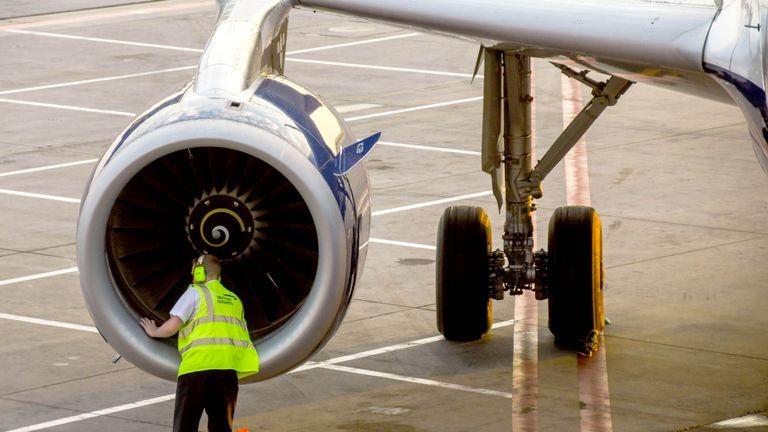
Their decision to return to the skies after such a traumatic event is a testament to their courage and love of flying, qualities that are essential in the world of aviation.
A Seasoned Pilot
In another corner of the world, Captain Damir Yusupov, a 41-year-old experienced pilot, was preparing for what seemed like a normal workday. Little did he know that his upcoming flight – Ural Airlines

Flight 178 – would soon become an international headline. Yusupov's experience and expertise were about to be tested in a way he could never have anticipated.
Planned Route
Arriving in the cockpit, Yusupov checked the flight plan for the day. The route from Moscow's Zhukovsky Airport to the sunny destination of Simferopol in Crimea was one he was familiar with.

The conditions were perfect for a smooth and uneventful flight – clear weather, a familiar route, and a well-maintained aircraft. There was no indication that this flight would be any different from the countless others he had flown.
Seemingly Perfect
Yusupov had flown this short route to Crimea many times, each flight routine and unremarkable. The clear weather conditions that day heightened his expectation of a trouble-free flight.

As an experienced pilot, Yusupov had experienced various situations, but the calm weather and familiar route promised a simple day in the office, high above the clouds.
Heading for the Runway
After completing all pre-flight checks meticulously, Yusupov received clearance to push back from the gate. The plane slowly joined the queue, moving towards the runway. Yusupov was ready, his hands firm on the controls, his mind focused on the task ahead.

As the aircraft approached the takeoff runway, an air of normalcy pervaded the cockpit, a routine process, with no inkling of the extraordinary events that were about to unfold.
Alert Signal
Upon receiving clearance for takeoff, Captain Damir Yusupov skillfully powered up the engines of Ural Airlines Flight 178. The powerful engines roared to life, propelling the aircraft down the runway.

In the cabin, passengers settled in, anticipating the routine ascent towards the skies en route to Crimea. Unbeknownst to them, their journey would soon drastically deviate from the norm and put the resilience of everyone on board to the test.
Unsettling Movements
As the aircraft began its ascent, a sudden and violent jolt shook the passengers. Disturbing noises from outside permeated into the cabin, creating an ominous atmosphere.

A pungent smell of burning filled the air, triggering alarm among the passengers. The mood in the cabin swiftly shifted from calm to panic as fear and confusion spread through the rows of seats.
Complete Disarray
In the cockpit, Captain Yusupov found himself facing a rapidly escalating crisis. The aircraft's control panels lit up with a multitude of warning lights, each indicating a potential disaster.

With his extensive experience, Yusupov knew he had to keep his composure to handle the critical situation. His pilot training kicked in as he frantically tried to diagnose the problem while keeping the aircraft under control.
Engine Failure
Captain Damir Yusupov faced every pilot's nightmare as he became aware of the severe situation in his aircraft. The engines, crucial for maintaining altitude and propelling the aircraft, had catastrophically failed. This mechanical failure was evident from the unusual noises echoing through the fuselage and the acrid smell of smoke filling the cabin.

Yusupov knew the situation was dire, and the lives of all on board hung in the balance. With each passing second, the struggle of the aircraft to stay airborne became more apparent, and the risk of a catastrophic crash loomed larger.
Loss of Altitude
The aircraft, just departed from the airport, was now in a perilous descent towards the ground. The once powerful engines, now silent and lifeless, offered no assistance as the aircraft rapidly lost altitude. Yusupov's mind raced as he assessed the rapidly unfolding crisis. The ground was approaching fast, and the dense tree cover below posed a serious threat.
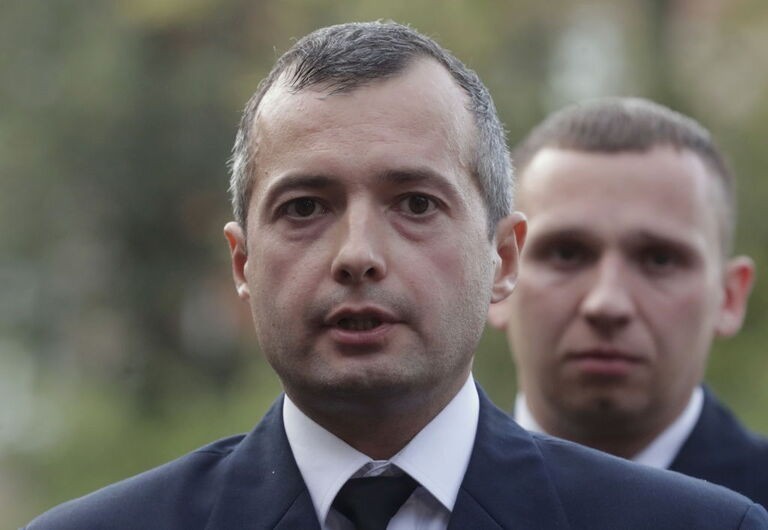
In these critical moments, Yusupov's quick thinking and decisive actions teetered between a potential tragedy and a chance at survival.
Calling for Help
Faced with the severity of the situation, Yusupov contacted air traffic control for assistance. Maintaining a calm demeanor over the radio despite the chaos around him, he clearly explained the emergency, detailing the loss of engine power and the precarious state of the aircraft.

Yusupov knew he needed authorization for an emergency maneuver, something that could decide the fate of everyone on board.
Attempted Landing
With the engines rendered useless, Yusupov held onto hope that the remaining momentum of the aircraft might be enough to safely guide them back to the airport. He shared this plan with air traffic control and sought their approval for the daring attempt.

With their support, he initiated a turning maneuver to steer the aircraft back towards the runway. This bold move was a risk, but it was their best chance.
Not Looking Good
The turn towards the airport was a moment of temporary relief for Yusupov. He had successfully redirected the aircraft, but that was only the first hurdle. As he glanced at the altimeter, his heart sank.

The numbers told a grim tale – the aircraft was losing altitude much faster than anticipated. Hope for a safe return to the airport quickly faded.
Running Out of Time
Yusupov realized they might not make it back to the runway. The aircraft was descending at an alarming speed, much quicker than hoped for.

The possibility of a safe landing slipped away, and the prospect of an inevitable crash became a tangible reality. Yusupov's mind raced as he tried to devise a new plan to avert the disaster.
Preparing for an Emergency Landing
Yusupov's eyes scanned the landscape below, searching for a possible crash site that would minimize damage and loss of life. He knew that a crash in a populated area could have devastating consequences, extending the tragedy beyond the occupants of the aircraft. Resolute in his determination to save as many lives as possible, Yusupov looked for an open area where the impact of the landing could be limited.

His gaze fell upon a cornfield – not ideal, but it offered a chance for a less catastrophic landing. With grim determination, Yusupov steered the aircraft towards the field, preparing for an emergency landing to spare the lives of his passengers and crew members.
Into the Field
As Captain Damir Yusupov surveyed the landscape below, the vast expanse of a cornfield caught his eye, a glimmer of hope in a desperate situation. This open field, free of buildings or people, offered the least hazardous option for an emergency landing. With a mix of determination and fear, Yusupov steeled himself for the impending task.

He carefully aligned the flight path of the aircraft towards the cornfield, knowing that each of his maneuvers in these critical moments could determine life and death. The cornfield, a mere patch of earth from above, was now the lifeline for the 233 souls on board.
Ready for Impact
The descent towards the cornfield was tense and fraught with uncertainty. Yusupov, devoid of assistance from landing gear or engines, had to rely solely on his skill and experience as a pilot. The aircraft, now more of a glider than a powered plane, made a forceful impact that sent a shockwave through the cabin.

The fuselage groaned under the strain as the aircraft plowed through the field, leaving a trail of devastation in its wake. In those harrowing moments as the aircraft came to a halt, Yusupov's thoughts revolved around the safety of his passengers.
No Casualties
The aftermath of the emergency landing was a picture of relief and disbelief. Passengers and crew were shaken but alive. The cabin, filled with a mix of fear and gratitude, echoed with the sounds of people processing their narrow escape from disaster.

Yusupov's quick thinking and decisive actions had averted a potentially catastrophic loss of life. Despite the adversity, he managed to save not only his own life but also the lives of all 226 passengers and his crew members.
Damaged Wings
The immediate question on everyone's mind was the cause of the near-fatal incident. The subsequent investigation unveiled a remarkable chain of events. It was revealed that during the aircraft's ascent, a flock of seagulls had inadvertently crossed into the aircraft's flight path.

These birds, in a stroke of fate, were sucked into the engines, leading to their failure. The once powerful turbines were rendered out of commission, and Yusupov had to rely solely on his piloting skills to safely land the aircraft.
Decorated Pilots
In the aftermath of the incident, Captain Damir Yusupov's actions were met with widespread recognition and admiration. His ability to remain calm under extreme pressure, coupled with his masterful handling of the aircraft, saved countless lives. Both Yusupov and his co-pilot were acknowledged for their heroism and nominated for prestigious state awards.

However, the true measure of their success lay not in awards or recognition but in the grateful smiles and heartfelt thanks of the passengers they had safely reunited with their families.
"A Truly Good Day"
The successful emergency landing and the incredible survival of all on board did not go unnoticed even at the highest levels of government in Russia. Kremlin spokesperson Dmitry Peskov acknowledged the seriousness of the situation and the remarkable outcome. He extended his best wishes for a speedy recovery to those who had suffered injuries in the incident.

Peskov's statement underscored the nation's relief and pride in the heroic actions of the pilots, emphasizing the significance of their achievement in averting a possible tragedy. The day's events, which could have ended in mourning, were instead characterized by gratitude and respect for the skills and courage exhibited by Yusupov and his crew.













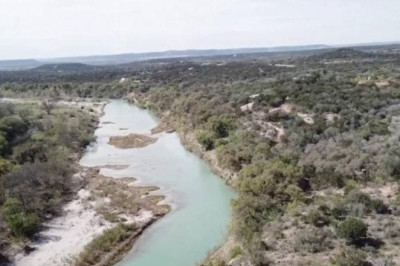
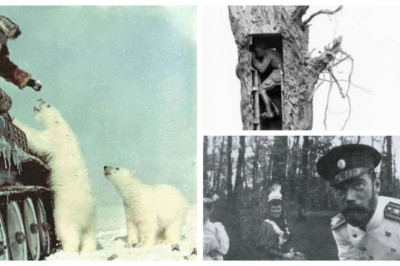





Comments
0 comment